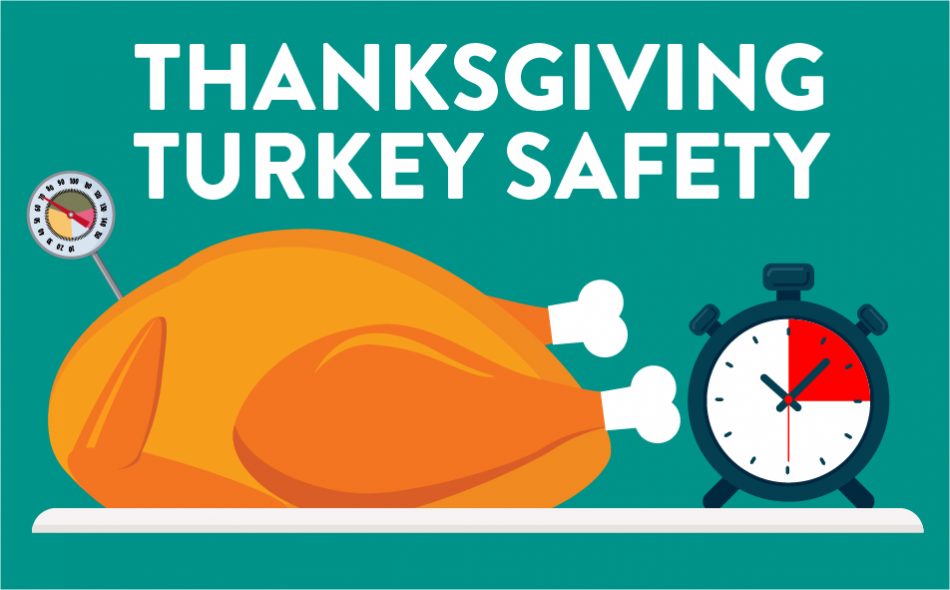Oh, pumpkin. How we have missed you. Pumpkin spice latte, pumpkin muffins, and the ever-popular pumpkin pie. Thanksgiving is a great time to get your pumpkin on! But only after you have finished your delicious Thanksgiving turkey dinner.
Maybe this is your first time cooking holiday meals for a crowd. Or maybe last year you cooked a Thanksgiving turkey only to find it did not turn out as great as the picture (thanks, Pinterest!).
All of this makes you wonder (along with everyone else getting ready to cook this frozen bird): How long do you cook a turkey in the oven? How do you cook a moist turkey? How do you cook the perfect turkey? And for big eaters, how do you cook a 12-pound Thanksgiving turkey?
Those are great questions. But maybe the first question you need to ask is:
How do you safely cook a Thanksgiving turkey?
According to the Center for Disease Controls and Prevention, food handling errors and inadequate cooking are the most common problems.
Did you know? When turkey is left out at room temperature for more than two hours, its temperature becomes unsafe as it moves into the danger zone between 40°F and 140°F; this is when bacteria can grow rapidly.
The CDC recommends following their four food safety tips to help you safely prepare your next holiday turkey meal. Be sure to read the full article for all their safety tips.
- Safely Thaw Your Turkey. Thaw turkeys in the refrigerator, in a sink of cold water that is changed every 30 minutes, or in the microwave. Never thaw your turkey by leaving it out on the counter.
- Safely Handle Your Turkey. Raw poultry can contaminate anything it touches with harmful bacteria. Follow the four steps to food safety – cook, clean, chill, and separate – to prevent the spread of bacteria.
- Safely Stuff Your Turkey. Cooking stuffing in a casserole dish makes it easy to make sure it is thoroughly cooked. If you put stuffing in the turkey, do so just before cooking. Use a food thermometer to make sure the stuffing’s center reaches 165°F. Bacteria can survive in stuffing that has not reached 165°F and may then cause food poisoning. Wait for 20 minutes after removing the bird from the oven before removing the stuffing from the turkey’s cavity; this allows it to cook a little more. Learn more about how to prepare stuffing safely.
- Safely Cook Your Turkey. Set the oven temperature to at least 325°F. Cooking times vary depending on the weight of the turkey. To make sure the turkey has reached a safe internal temperature of 165°F, check by inserting a food thermometer into the center of the stuffing and the thickest portions of the breast, thigh, and wing joint. Learn more about safe minimum cooking temperatures and how to use a food thermometer for turkey and other foods.
Related: Let’s talk turkey. Check out the USDA Consumer Guide to Safely Roasting a Turkey and these five tips for safely deep frying a turkey.
Maybe you like learning about how bacteria can grow, handling sophisticated laboratory equipment, chemistry, and microbiology. If so, then a career in Medical Laboratory Science might be right for you. At Southern Miss, we have a degree specifically designed for experienced Medical Laboratory Technologists. Learn more at https://online.usm.edu/undergrad/medical-laboratory-sciences/.







Share on Social Media: